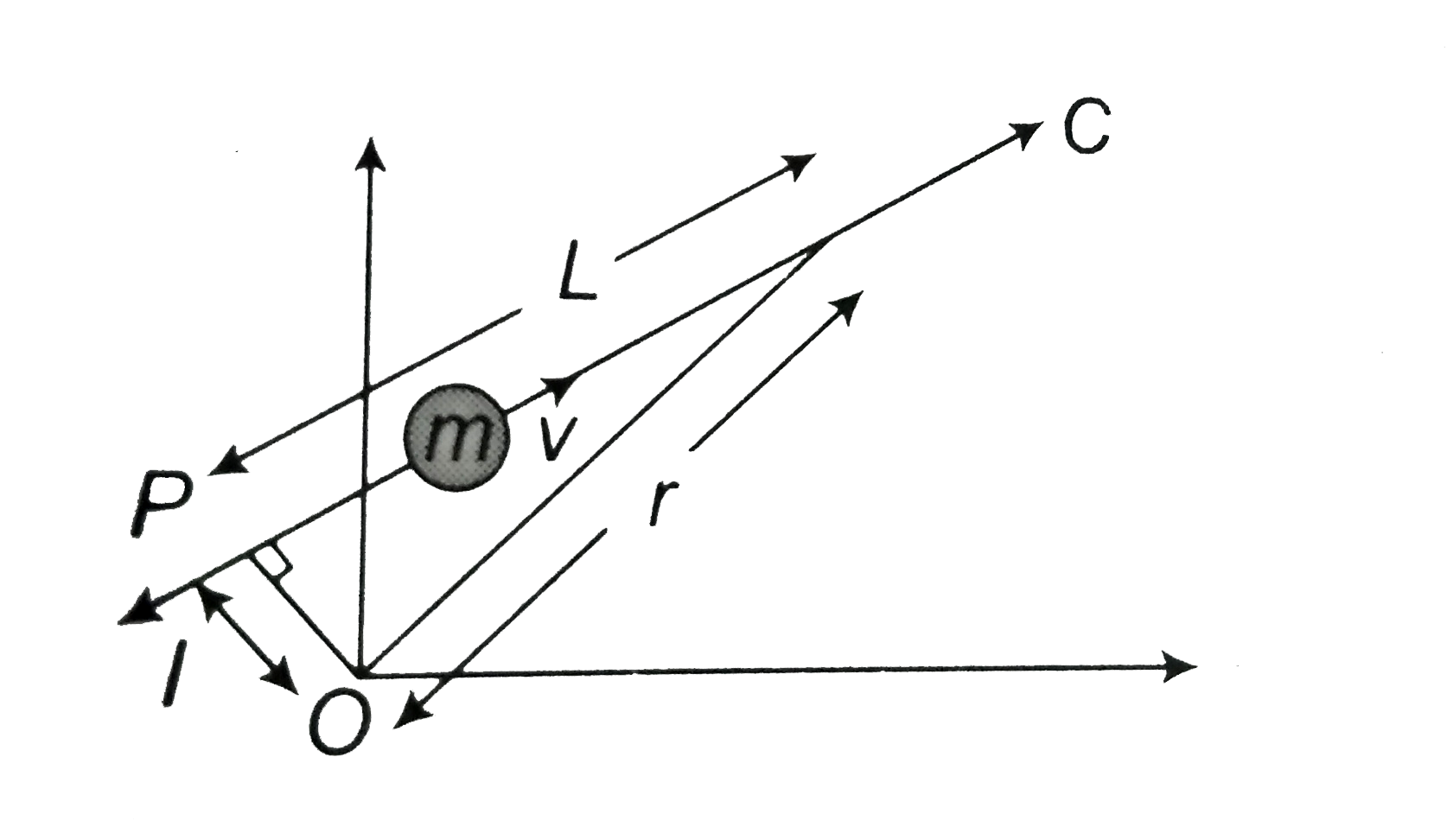A particle has a linear momentum p and position vector r. the angular momentum of this particle about the origin will not be zero under the conditions
p=0
p is perpendicular to r and does not cross r
p is anti-parallel to r
the particle passes through the origin.
The correct Answer is:B
To determine the conditions under which the angular momentum L of a particle about the origin is not zero, we can use the formula for angular momentum:
L=r×p
where:
- r is the position vector of the particle,
- p is the linear momentum of the particle.
Step 1: Understand the Cross Product
The angular momentum L is given by the cross product of the position vector r and the linear momentum p. The magnitude of the cross product can be expressed as:
|L|=|r||p|sinθ
where θ is the angle between the vectors r and p.
Step 2: Analyze the Conditions for Zero Angular Momentum
For the angular momentum L to be zero, one of the following conditions must be true:
1. |p|=0 (the particle is at rest).
2. sinθ=0 (the vectors r and p are parallel or anti-parallel).
3. r=0 (the particle is located at the origin).
Step 3: Identify Conditions for Non-Zero Angular Momentum
To find when the angular momentum is not zero, we need to ensure that none of the above conditions hold. This leads us to the following conditions:
1. |p|≠0 (the particle must be moving).
2. sinθ≠0 (the vectors must not be parallel or anti-parallel, meaning θ should not be 0 or π).
3. r≠0 (the particle must not be at the origin).
Step 4: Evaluate the Given Options
Now, let’s evaluate the options based on the conditions we derived:
1. If p=0, then L=0.
2. If p is perpendicular to r (i.e., θ=90∘), then L is not zero.
3. If p is anti-parallel to r (i.e., θ=180∘), then L=0.
4. If the particle passes through the origin, then r=0, and thus L=0.
Conclusion
From the analysis, the angular momentum of the particle about the origin will not be zero under the condition that the linear momentum p is perpendicular to the position vector r (Option 2).
Final Answer
The angular momentum of the particle about the origin will not be zero under the condition that p is perpendicular to r.
---
- r is the position vector of the particle,
- p is the linear momentum of the particle.
The angular momentum L is given by the cross product of the position vector r and the linear momentum p. The magnitude of the cross product can be expressed as:
For the angular momentum L to be zero, one of the following conditions must be true:
1. |p|=0 (the particle is at rest).
2. sinθ=0 (the vectors r and p are parallel or anti-parallel).
3. r=0 (the particle is located at the origin).
To find when the angular momentum is not zero, we need to ensure that none of the above conditions hold. This leads us to the following conditions:
1. |p|≠0 (the particle must be moving).
2. sinθ≠0 (the vectors must not be parallel or anti-parallel, meaning θ should not be 0 or π).
3. r≠0 (the particle must not be at the origin).
Now, let’s evaluate the options based on the conditions we derived:
1. If p=0, then L=0.
2. If p is perpendicular to r (i.e., θ=90∘), then L is not zero.
3. If p is anti-parallel to r (i.e., θ=180∘), then L=0.
4. If the particle passes through the origin, then r=0, and thus L=0.
From the analysis, the angular momentum of the particle about the origin will not be zero under the condition that the linear momentum p is perpendicular to the position vector r (Option 2).
The angular momentum of the particle about the origin will not be zero under the condition that p is perpendicular to r.
Topper's Solved these Questions
Similar Questions
Knowledge Check
- Question 1 - Select One
Consider a particle of mass m having linear momentum →p at position →r relative to the origin O. Let →L be the angular momentum of the particle with respect to the origin. Which of the following equations correctly relate(s) →r, →p and →L?
Ad→Ldt+→r×d→pdt=0Bd→Ldt+d→rdt×→p=0Cd→Ldt−d→rdt×→p=0Dd→Ldt−→r×d→pdt=0 - Question 2 - Select One
Angular momentum of the particle rotating with a central force is constant due to
Aconstant torqueBconstant forceCconstant linear momentumDzero torque
A particle is rotating in circle with uniform speed as shown. The angular momentum of the particle w.r.t. origin is :-
 View Solution
View SolutionThe z component of the angular momentum of a particle whose position vector is
View SolutionIn an orbital motion, the angular momentum vector is :
View SolutionThe angular momentum of a system of particles is conserved
View SolutionA particle of mass m moves along line PC with velocity v as shown. What is the angular momentum of the particle about O?
 View Solution
View SolutionA particle moves on a straight line with a uniform velocity. It's angular momentum
View Solution

